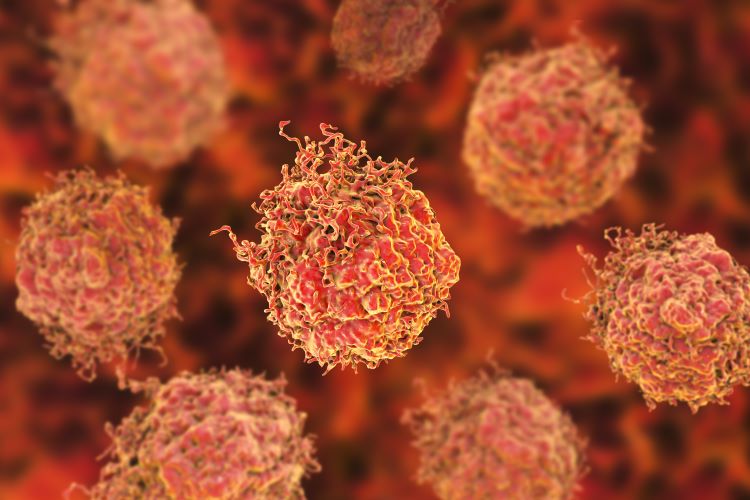Solving the taxing problems of taxanes?
Posted: 4 November 2022 | | No comments yet
Could the new wave of taxane chemotherapies succeed where traditional chemotherapies have failed? Colin Freund, Chief Executive Officer of Modra Pharmaceuticals, reveals the benefits of this emerging generation of anticancer treatment.


Despite advances with targeted and immuno-oncology therapies, chemotherapies remain a cornerstone of cancer treatment for many tumour types – a reflection of their significant anti‑tumour effects. Nevertheless, chemotherapy’s disadvantages, including substantial toxicities, combined with inconvenient hospital-based intravenous (IV) administration, impede patients’ ability to stay on treatment and their quality of life. New approaches to taxane chemotherapies, including the use of orally available formulations with improved pharmacokinetic (PK) profiles compared to IV formulations, have the potential to inject (pun intended) new life into these therapies, offering the improved convenience of at-home pill‑based treatment concomitant with reductions in traditionally unavoidable and problematic side effects.
The importance of taxanes in oncology
Taxanes have played an important role in anticancer treatment for several decades. Derived from the yew tree (genus taxus, from which the drug class’ name is derived), taxanes are microtubule-stabilising agents that impact the cell cycle, promoting mitotic arrest and cell death. Paclitaxel, docetaxel and cabazitaxel are the three primary approved taxane therapies. They are widely used to treat a variety of solid tumours, including prostate, lung, ovarian and breast cancer.


Taxanes are derived from the yew tree (genus taxus).
While highly effective, taxanes also exhibit several of the typical limitations associated with systemic chemotherapies. First, they are associated with a variety of toxicities, including neutropenia, neuropathy, hypersensitivity, alopecia and gastrointestinal issues. These toxicities are driven both by the systemic nature of taxanes’ mechanisms, as well as some of the excipients used in their formulations. Second, taxanes are administered by IV infusion, which in most cases requires a regular visit to a hospital for a lengthy infusion procedure. Both aspects have significant negative impacts on treatment optimisation and patients’ quality of life, which can further exacerbate the challenges of living with advanced cancer.
Given these issues, and the widespread use and continuing relevance of taxanes as anticancer therapies, several biotechnology companies have sought to develop new taxane therapies that aim to address these limitations. One of the many hurdles to improving these therapies, the taxane molecules themselves exhibit poor water solubility and vulnerability to inactivation by various internal biologic processes,2 significantly limiting chances of success.
Potential of oral taxanes and initial outcomes in the clinic
Oral taxanes face two primary challenges for successful development: first, obtaining therapeutic systemic exposure levels with oral taxanes has been an ever-present challenge due to poor water solubility and low absorption through the intestinal tract, caused by P-glycoprotein (P-gp)-mediated efflux and metabolisation by Cytochrome P4503A4 (CYP3A4). Second, obtaining an acceptable toxicity profile for an oral chemotherapy – especially in terms of neutropenia and gastrointestinal tolerability – is not straightforward.
Taxane therapy is an established, highly effective cornerstone in oncology treatment. Nevertheless, it is one that would benefit from improvement in both its route of administration as well as its toxicity profile”
Nevertheless, studies have shown that oral delivery remains a preferred method in terms of patient compliance,3 overall healthcare costs and convenience. Several companies have therefore made the attempt in recent years to create novel oral taxane therapeutics that address these challenges. These include Athenex with Oraxol, Odonate with Tesetaxel, and Modra Pharmaceuticals with ModraDoc006/r.
Oraxol is a two-component therapy consisting of an oral formulation of paclitaxel, administered in combination with encequidar, a proprietary ‘booster’ which inhibits P-gp to improve absorption and consequent systemic exposure to paclitaxel. In 2020, Athenex completed a Phase III trial in metastatic breast cancer comparing Oraxol to three-weekly (q3w) IV paclitaxel. Data from the Phase III study showed a significant improvement in response rate and favourable trends in efficacy measures, including progression-free survival (PFS) and overall survival (OS), as well as a marked reduction in neuropathy compared to q3w IV paclitaxel. However, severe neutropenia and some gastrointestinal toxicities were worse compared to q3w IV paclitaxel. Based on these results, Athenex filed for a new drug application (NDA) with the US Food and Drug Administration (FDA), but in early 2021 the company received a Complete Response Letter from FDA, citing various concerns including an “increase in neutropenia-related sequelae” in the Oraxol arm.4 The company is continuing to develop Oraxol, including in a combination study with Keytruda in solid tumours.
Tesetaxel was developed as a novel oral taxane molecule designed to be less sensitive to P-gp efflux and to have a long half-life, enabling it to be administered every three weeks. The drug was investigated by Odonate in patients with human epidermal growth factor receptor 2 (HER2)-negative, hormone receptor (HR)-positive metastatic breast cancer, most recently in a Phase III study that read out in 2021, comparing a combination of Tesetaxel with low-dose capecitabine to a standard dose of capecitabine. While Tesetaxel showed significant improvements of overall response rate (ORR) and PFS, it exhibited substantially worse toxicities, most notably in terms of much higher haematological toxicity, including a severe neutropenia rate of over 70 percent.6 In March 2021, following a pre-NDA meeting, the company issued a release stating “[the company] has concluded that the clinical data package for Tesetaxel is unlikely to support FDA approval”, and the programme was subsequently terminated.


Oral taxanes have been trialled for the treatment of metastatic hormone-sensitive prostate cancer.
Modra Pharmaceuticals is developing ModraDoc006/r, which, like Oraxol, is a two‑component drug consisting of an oral formulation of docetaxel (ModraDoc006), co-administered with a booster, ritonavir (r). Importantly, r not only inhibits P-gp (thereby reducing efflux) but also CYP3A4 (which reduces metabolism of docetaxel into inactive components). It should be noted that ritonavir is approved and used as a booster for various drugs, including most recently as a component of Paxlovid,6 the COVID-19 therapeutic launched by Pfizer. A crucial differentiation from the other oral taxanes can be seen in ModraDoc006/r’s optimised pharmacokinetic profile, whereby comparable exposure levels of systemic docetaxel to IV docetaxel exposure have been achieved at much (>90 percent) lower maximum concentrations. This is likely to have enabled ModraDoc006/r to maintain a similar efficacy rate to IV docetaxel, while having a positive effect on its toxicity profile, most notably on neutropenia, neuropathy and alopecia. In a recently completed Phase IIb study in metastatic castrate-resistant prostate cancer, comparing two different dose levels of ModraDoc006/r to IV docetaxel, ModraDoc006/r at its lower dose exhibited no neutropoenia and a >50 percent reduction in neuropathy, while retaining comparable efficacy to IV docetaxel with a mild and manageable gastrointestinal toxicity profile.7 In addition, Modra is also investigating the potential use of ModraDoc006/r to reverse docetaxel resistance. The company is planning further development in prostate and breast cancer to take advantage of these promising results.
Taxanes have played an important role in anticancer treatment for several decades”
The future
The negative results for Tesetaxel and the challenges for Oraxol were undoubtedly setbacks for the oral taxane field as well as for patients. But the need for innovation and improvement to taxanes has never been greater, given the continued widespread use of taxanes to treat solid tumours alongside novel targeted agents and immunotherapy. As recently as August 2022, docetaxel in combination with the oral androgen receptor-targeting agent Nubeqa (which is being jointly developed and marketed by Bayer and Orion) was approved for the treatment of metastatic hormone-sensitive prostate cancer. This demonstrates the continued – and even increasing – relevance of this class of chemotherapy.
Taxane therapy is an established, highly effective cornerstone in oncology treatment. Nevertheless, it is one that would benefit from improvement in both its route of administration as well as its toxicity profile.
Development, therefore, of better tolerated oral taxanes is an exciting space to watch, as new data and trials are on the horizon hold the potential to transform the taxane treatment landscape and improve the lives of patients on a large scale.
About the author


References
1. Hennenfent K, Govindan R. Novel formulations of taxanes: a review. Old wine in a new bottle? Annals of Oncology [Internet]. 2006 [cited 7 September 2022];17(5):735-749. Available from: https://linkinghub.elsevier.com/retrieve/pii/S0923-7534(19)47575-3
2. Škubník J, Pavlíčková V, Ruml T, Rimpelová S. Current Perspectives on Taxanes: Focus on Their Bioactivity, Delivery and Combination Therapy. Plants. 2021;10(3):569.
3. Krohe M, Eek D, Mazar I, et al. Patient-reported preferences for oral versus intravenous administration for the treatment of cancer: A review of the literature. Patient Preference and Adherence, 2016. Volume 10, pp.1609–1621.
4. Fischer L. Type A Meeting Between FDA and Athenex Discusses Oral Paclitaxel Plus Encequidar for Metastatic Breast Cancer [Internet]. Oncology Nursing News. 2021 [cited 12 September 2022]. Available from: https://www.oncnursingnews.com/view/type-a-meeting-between-fda-and-athenex-discusses-oral-paclitaxel-plus-encequidar-for-metastatic-
breast-cancer
5. Karlovitch S. FDA Feedback Leads to Discontinuation of Tesetaxel Development in Solid Tumors [Internet]. Targeted Oncology. 2022 [cited 12 September 2022]. Available from: https://www.targetedonc.com/view/fda-feedback-leads-to-discontinuation-of-tesetaxel-development-in-solid-tumors
6. Pfizer Inc. Pfizer’s Novel COVID-19 Oral Antiviral Treatment Candidate Reduced Risk of Hospitalization or Death by 89% in Interim Analysis of Phase 2/3 EPIC-HR Study [Internet]. 2021. Available from: https://www.pfizer.com/news/press-release/press-release-detail/pfizers-novel-covid-19-oral-antiviral-treatment-candidate
7. Modra Pharmaceuticals. Modra Pharmaceuticals Presents Positive Phase IIb Results for ModraDoc006/r, a Boosted Oral Taxane for
Patients with Metastatic Prostate Cancer, at 2022 ASCO GU Annual Meeting [Internet]. 2022.
Available from: https://modrapharmaceuticals.com/modra-pharmaceuticals-presents-positive-phase-
iib-results-for/
Issue
Related topics
Anti-Cancer Therapeutics, Biopharmaceuticals, Chemotherapy, Drug Development, Drug Manufacturing, Immunotherapy, Research & Development (R&D), Therapeutics
Related organisations
Related drugs
Cabazitaxel Accord (cabazitaxel), Cabazitaxel Teva (cabazitaxel), Chemotherapeutic drugs, docetaxel, ModraDoc006/r, Oraxol, paclitaxel, Tesetaxel
Related diseases & conditions
Alopecia, HER2-positive metastatic breast cancer, hypersensitivity, Lung cancer, metastatic castration-resistant prostate cancer (CRPC), neutropoenia, Ovarian Cancer









